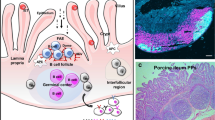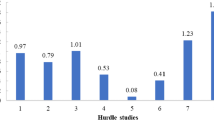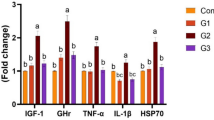Abstract
The application of sonication and thermosonication (53 ± 1 °C) was investigated as potential methods for reducing numbers of Campylobacter, enterobacteriaceae and total viable counts (TVC) on raw poultry. Sonication equipment included a high-intensity unit (HI) and a low-intensity unit (LI), which produced 20,000 and 20 W/L, respectively. The susceptibility of ten Campylobacter isolates in liquid media to thermosonication treatment was also investigated to determine whether differences between isolates existed. All Campylobacter strains were susceptible to thermosonication in the HI unit with inactivations ranging from 2.97–4.15 log10 CFU/mL. Campylobacter jejuni was more susceptible to thermosonication than to thermal or sonication treatment with mean inactivations of 4.72, 1.45 and 3.17 log10 CFU/mL, respectively. Following 16 min thermal, sonication and thermosonication treatments of broiler skin pieces in the HI unit, no viable Campylobacter or enterobacteriaceae were detected and TVC were reduced by 1.93, 1.34 and 2.49 log10 CFU/g, respectively. Thermosonication treatment in the LI unit reduced enterobacteriaceae and TVC populations by 2.74 and 1.69 log10 CFU/g, respectively. Thermosonication treatment was generally more effective against Campylobacter in liquid matrices in comparison to inoculated poultry products.

Similar content being viewed by others
References
Ahmed, F. I., & Russell, C. (1975). Synergism between ultrasonic waves and hydrogen peroxide in the killing of micro-organisms. The Journal of Applied Bacteriology, 39(1), 31–40.
Álvarez, I., Mañas, P., Sala, F. J., & Condón, S. (2003). Inactivation of Salmonella enteriditis by ultrasonic waves under pressure at different water activities. Applied and Environmental Microbiology, 69(1), 668–672.
Allen, V. M., Burton, C. H., Wilkinson, D. J., Whyte, R. T., Harris, J. A., Howell, M., et al. (2008). Evaluation of the performance of different cleaning treatments in reducing microbial contamination of poultry transport crates. British Poultry Science, 49(3), 233–240.
Berrang, M. E., Ladely, S. R., & Buhr, R. J. (2001). Presence and level of Campylobacter, coliforms, Escherichia coli, and total aerobic bacteria recovered from broiler parts with and without skin. Journal of Food Protection, 64(12), 184–188.
Birk, T., & Knochel, S. (2009). Fate of food-associated bacteria in pork as affected by marinade, temperature, and ultrasound. Journal of Food Protection, 72(3), 549–555.
Boysen, L., & Rosenquist, H. (2009). Reduction of thermotolerant Campylobacter species on broiler carcasses following physical decontamination at slaughter. Journal of Food Protection, 72(3), 497–502.
Char, C. D., Mitilinaki, E., Guerrero, S. N., & Alzamora, S. M. (2010). Use of High-Intensity Ultrasound and UV-C Light to Inactivate Some Microorganisms in Fruit. Food and Bioprocess Technology. doi:10.1007/s11947-009-0307-7.
Curtis, L. (2007). Campylobacter. Available at: www.foodsafetywatch.com. Accessed 6 October 2009.
Drakopoulou, S., Terzakis, S., Fountoulakis, M. S., Mantzavinos, D., & Manios, T. (2009). Ultrasound-induced inactivation of gram-negative and gram-positive bacteria in secondary treated municipal wastewater. Ultrasonics Sonochemistry, 16(5), 629–634.
Earnshaw, R. G., Appleyard, J., & Hurst, R. M. (1995). Understanding physical inactivation processes: combined preservation opportunities using heat, ultrasound and pressure. International Journal of Food Microbiology, 28(2), 197–219.
Food Safety Authority Ireland (2002). Control of Campylobacter species in the Food Chain. Available at: www.fsai.ie. Accessed 2 February 2009.
Gibbens, J. C., Pascoe, S. J., Evans, S. J., Davies, R. H., & Sayers, A. R. (2001). A trial of biosecurity as a means to control Campylobacter infection of broiler chickens. Preventive Veterinary Medicine, 48(2), 85–99.
Hinton, A., Jr., Northcutt, J. K., Cason, D. P., Smith, D. P., & Ingram, K. D. (2007). Bacterial populations of broiler carcasses washed in mixtures of potassium hydroxide and lauric acid. Journal of Applied Poultry Research, 16, 387–391.
James, C., James, S. J., Hannay, N., Purnell, G., Barbedo-Pinto, C., Yaman, H., et al. (2007). Decontamination of poultry carcasses using steam or hot water in combination with rapid cooling, chilling or freezing of carcass surfaces. International Journal of Food Microbiology, 114(2), 195–203.
Joyce, E., Phull, S. S., Lorimer, J. P., & Mason, T. J. (2003). The development and evaluation of ultrasound for the treatment of bacterial suspensions. A study of frequency, power and sonication time on cultured Bacillus species. Ultrasonics Sonochemistry, 10(6), 315–318.
Lillard, H. S. (1993). Bactericidal effect of chlorine on attached Salmonellae with and without sonification. Journal of Food Protection, 56(8), 716–717.
Lindqvist, R., & Lindblad, M. (2008). Quantitative risk assessment of thermophilic Campylobacter spp. and cross-contamination during handling of raw broiler chickens evaluating strategies at the producer level to reduce human campylobacteriosis in Sweden. International Journal of Food Microbiology, 121(1), 41–52.
Loretz, M., Stephan, R., & Zweifel, C. (2009). Antimicrobial activity of decontamination treatments for poultry carcasses: A literature survey. Food Control. doi:10.1016/j.foodcont.2009.11.007.
Mason, T. J., Joyce, E., Phull, S. S., & Lorimer, J. P. (2003). Potential uses of ultrasound in the biological decontamination of water. Ultrasonics Sonochemistry, 10(6), 319–323.
Moore, J. E., Corcoran, D., Dooley, J. S., Fanning, S., Lucey, B., Matsuda, M., et al. (2005). Campylobacter. Veterinary Research, 36(3), 351–382.
Mor-Mur, M., & Yuste, J. (2010). Emerging Bacterial Pathogens in Meat and Poultry: An Overview. Food and Bioprocess Technology, 3(1), 24–35.
Nauta, M., Hill, A., Rosenquist, H., Brynestad, S., Fetsch, A., van der Logt, P., et al. (2009). A comparison of risk assessments on Campylobacter in broiler meat. International Journal of Food Microbiology, 129(2), 107–123.
Patriarchi, A., Maunsell, B., O’Mahony, E., Fox, A., Fanning, S., Buckley, J., et al. (2009). Prevalence of Campylobacter spp. in a subset of intensive poultry flocks in Ireland. Letters in Applied Microbiology, 49(3), 305–310.
Piyasena, P., Mohareb, E., & McKellar, R. C. (2003). Inactivation of microbes using ultrasound: A review. International Journal of Food Microbiology, 87(3), 207–216.
Rosenquist, H., Boysen, L., Galliano, C., Nordentoft, S., Ethelberg, S., & Borck, B. (2009). Danish strategies to control Campylobacter in broilers and broiler meat: facts and effects. Epidemiology and Infection, 137(12), 1742–1750.
Sams, A. R., & Feria, R. (1991). Microbial effects of ultrasonication of broiler drumstick skin. Journal of Food Science, 56(1), 247–248.
Scherba, G., Weigel, R. M., & O’Brien, W. D. (1991). Quantitative assessment of the germicidal efficacy of ultrasonic energy. Applied and Environmental Microbiology, 57(7), 2079–2084.
van Gerwe, T., Miflin, J. K., Templeton, J. M., Bouma, A., Wagenaar, J. A., Jacobs-Reitsma, W. F., et al. (2009). Quantifying transmission of Campylobacter jejuni in commercial broiler flocks. Applied and Environmental Microbiology, 75(3), 625–628.
Whyte, P., Collins, J. D., McGill, K., Monaghan, C., & O’Mahony, H. (2001). Quantitative investigation of the effects of chemical decontamination procedures on the microbiological status of broiler carcasses during processing. Journal of Food Protection, 64(2), 179–183.
Whyte, P., McGill, K., Cowley, D., Madden, R. H., Moran, L., Scates, P., et al. (2004). Occurrence of Campylobacter in retail foods in Ireland. International Journal of Food Microbiology, 95(2), 111–118.
Zilbauer, M., Dorrell, N., Wren, B. W., & Bajaj-Elliott, M. (2008). Campylobacter jejuni-mediated disease pathogenesis: An update. Transactions of the Royal Society of Tropical Medicine and Hygiene, 102(2), 123–129.
Acknowledgements
Funding for this research was provided under the Irish National Development Plan, through the Food Institutional Research Measure administered by the Department of Agriculture Fisheries and Food.
Author information
Authors and Affiliations
Corresponding author
Rights and permissions
About this article
Cite this article
Haughton, P.N., Lyng, J.G., Morgan, D.J. et al. An Evaluation of the Potential of High-Intensity Ultrasound for Improving the Microbial Safety of Poultry. Food Bioprocess Technol 5, 992–998 (2012). https://doi.org/10.1007/s11947-010-0372-y
Received:
Accepted:
Published:
Issue Date:
DOI: https://doi.org/10.1007/s11947-010-0372-y




